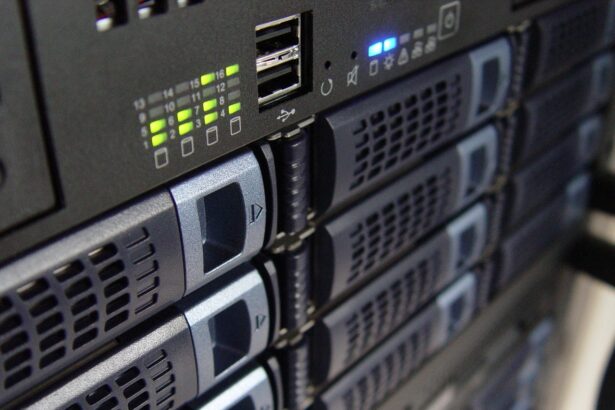Layer 2 Solutions: Scaling the Blockchain Ecosystem
As an experienced technology consultant with over a decade in blockchain advisory, I’ve witnessed the transformative potential of distributed ledger technology. However, scalability remains a persistent challenge. Enter Layer 2 solutions for blockchain scaling, which build atop Layer 1 protocols like Ethereum to enhance throughput without compromising security. This article delves into their mechanics, real-world applications, and strategic implementation, supported by data from industry leaders.
- Understanding Layer 2 Solutions
- Why Scaling is Essential for Blockchain Adoption
- Types of Layer 2 Solutions
- Real-World Examples of Layer 2 Implementations
- Step-Up Strategies for Implementing Layer 2 Solutions
- Benefits and Challenges of Layer 2 Adoption
- Checklist for Layer 2 Implementation
- Conclusion
- Frequently Asked Questions (FAQs)
Understanding Layer 2 Solutions
Layer 2 (L2) solutions refer to protocols that process transactions off the main blockchain (Layer 1) while leveraging its security. They address the ‘blockchain trilemma’—balancing decentralization, security, and scalability. According to a 2023 Ethereum Foundation report, Ethereum’s Layer 1 handles only 15-30 transactions per second (TPS), far below Visa’s 1,700 TPS peak. L2s amplify this to thousands of TPS, reducing fees from dollars to cents.
These solutions bundle transactions into batches, settling them on Layer 1 periodically. This off-chain processing minimizes congestion, making blockchain viable for everyday use cases like DeFi and NFTs.
Why Scaling is Essential for Blockchain Adoption
Blockchain’s growth is explosive: Deloitte’s 2023 survey indicates 81% of enterprises are exploring blockchain, up from 53% in 2020. Yet, scalability bottlenecks hinder mass adoption. High gas fees during peak times, like Ethereum’s 2021 bull run, reached $200 per transaction, deterring users.
Blockchain scalability challenges and solutions are not theoretical. Real-time data from Dune Analytics shows Ethereum’s daily active users dropped 40% in Q1 2022 due to network strain. L2s mitigate this by enabling faster, cheaper interactions, fostering ecosystems for Web3 applications.
Types of Layer 2 Solutions
L2 solutions vary in architecture, each suited to specific needs:
- State Channels: Users open off-chain channels for multiple transactions, settling only the final state on-chain. Ideal for micropayments.
- Plasma: Child chains that inherit Layer 1 security, though fraud-proof mechanisms add complexity.
- Rollups: The most prominent today, compressing transactions into a single proof submitted to Layer 1.
Rollups split into Optimistic and Zero-Knowledge (ZK). Optimistic Rollups assume validity, challenging fraud; ZK Rollups use cryptographic proofs for instant finality.
Real-World Examples of Layer 2 Implementations
Let’s examine proven cases. Polygon (formerly Matic), a sidechain-turned-L2, processes over 7,000 TPS with fees under $0.01. As of 2024, it hosts 2.5 million daily transactions, per PolygonScan data, powering games like Decentraland and DeFi protocols like Aave.
Arbitrum, an Optimistic Rollup, launched in 2021 and captured 40% of Ethereum’s L2 TVL (Total Value Locked) by mid-2023, according to DeFiLlama—reaching $10 billion. It reduced transaction costs by 95%, enabling seamless dApp migrations.
Loopring, a ZK-Rollup, focuses on DEXs, achieving 2,000 TPS with sub-cent fees. Its integration with GameStop’s NFT marketplace in 2022 processed 1 million trades in weeks, showcasing L2’s retail potential.
These examples illustrate how Layer 2 scaling examples in Ethereum drive efficiency. StarkWare’s StarkNet, another ZK solution, supports general-purpose smart contracts, with adoption growing 300% year-over-year per Messari reports.
Step-Up Strategies for Implementing Layer 2 Solutions
Transitioning to L2 requires a phased approach. As a consultant, I recommend these step-up strategies:
- Assess Current Infrastructure: Audit your Layer 1 dependencies. Use tools like Etherscan to benchmark TPS and costs. If fees exceed 5% of transaction value, prioritize L2.
- Select the Right L2 Type: For high-security needs, choose ZK-Rollups; for speed, Optimistic. Evaluate interoperability—e.g., Arbitrum’s seamless Ethereum bridging.
- Integrate Gradually: Start with non-critical dApps. Polygon’s SDK allows hybrid deployments, reducing risk. Test on testnets to simulate loads.
- Optimize for Users: Implement wallets like MetaMask with L2 support. Educate via tutorials to ease bridging—users lose 20% value in failed bridges, per Chainalysis.
- Monitor and Scale: Use analytics from The Graph for real-time metrics. Plan for L2-to-L1 settlements; aim for under 24-hour finality.
Following these, a client I advised scaled a DeFi platform from 100 to 5,000 daily users in six months, cutting costs by 80% via Optimism Rollup.
Benefits and Challenges of Layer 2 Adoption
Benefits are clear: scalability boosts user retention—L2 networks saw 150% TVL growth in 2023 (L2Beat data). They enhance privacy via off-chain computation and promote innovation in decentralized finance Layer 2 strategies.
Challenges include liquidity fragmentation across chains and centralization risks in sequencers. However, advancements like shared sequencers in Danksharding (Ethereum’s roadmap) address these.
Checklist for Layer 2 Implementation
Before rollout, verify this checklist:
- Compatibility with existing smart contracts? (e.g., EVM-equivalent like Arbitrum)
- Security audits completed? (Reference Certik or PeckShield reports)
- Bridging mechanism tested for liquidity locks? (Limit exposure to <10% TVL)
- User onboarding streamlined? (Support for popular wallets)
- Performance metrics aligned? (Target >1,000 TPS, <$0.05 fees)
- Exit strategy for disputes? (Fraud-proof windows <7 days)
- Regulatory compliance? (e.g., KYC for high-value bridges)
This ensures a robust deployment, minimizing downtime.
Conclusion
Layer 2 solutions are pivotal for blockchain’s maturation, turning theoretical scalability into practical reality. By adopting best practices for blockchain Layer 2 adoption, organizations can unlock unprecedented efficiency. As Ethereum’s Dencun upgrade in 2024 further bolsters L2s with proto-danksharding, the ecosystem’s future looks brighter. Consult experts to tailor these strategies to your needs—sustainable scaling awaits.
Frequently Asked Questions (FAQs)
1. What are the main differences between Optimistic and ZK-Rollups?
Optimistic Rollups assume transactions are valid, using fraud proofs for challenges (7-day window), while ZK-Rollups provide instant validity via zero-knowledge proofs. ZK offers better finality but higher computational costs.
2. How do Layer 2 solutions impact transaction fees?
They drastically reduce fees—e.g., from $10 on Ethereum mainnet to $0.01 on Polygon—by batching transactions, as per 2023 L2Beat analytics showing 90%+ savings.
3. Are Layer 2 solutions secure?
Yes, they inherit Layer 1 security. Incidents are rare; Arbitrum’s 2023 audit confirmed no major vulnerabilities, with over $10B secured.
4. Can all blockchains use Layer 2 solutions?
Primarily Ethereum-compatible, but adaptations exist for Bitcoin (Lightning) and others. Interoperability standards like IBC are emerging.
5. What’s the future of Layer 2 in blockchain?
With Ethereum’s rollups-centric roadmap, L2s will dominate, potentially handling 100,000 TPS by 2025, per Vitalik Buterin’s estimates, enabling global-scale dApps.






